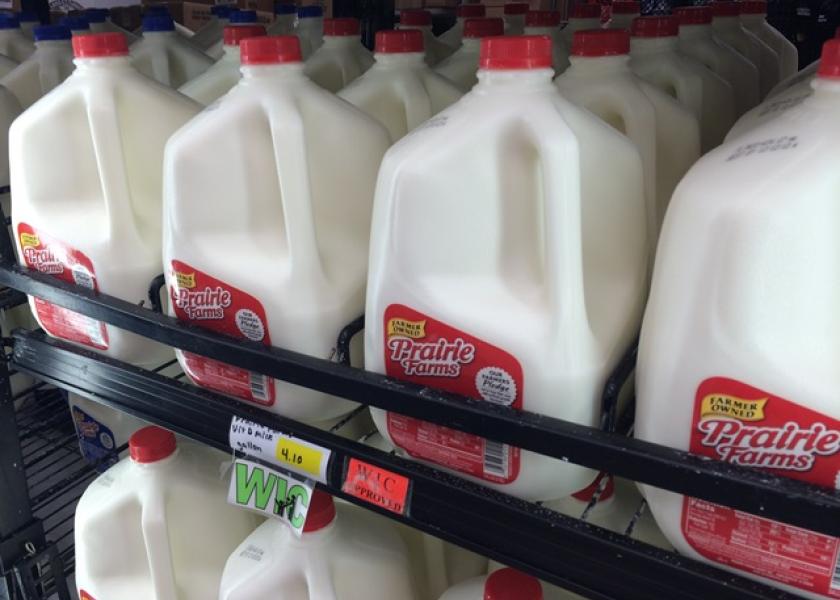Is Milk Price Seasonality Relevant?

The dairy market provided hope and then took it away. There have been numerous times over the course of the past year during which Class III milk futures moved substantially higher only to fall back due to the movement of underlying cash. Throughout the course of the past year, cheese prices have been generally confined to a sideways range. Blocks have remained in a tighter price range than barrels making it all the more interesting to realize the impact of perception on the market. After all, it is a futures market in which market participants anticipate what prices might be based on current fundamentals, analysis, USDA estimates, monthly industry reports and trends.
The difficulty is deciphering what is factual and relevant, and what is psychological and emotional. We all would like to see much higher milk prices no matter if prices are at $16.00, $20.00 or $24.00 per cwt. We would all like to see dairy prices at the retail level reflected at the farm level. We would all like to see milk prices keep up with the rising cost of good and services. Yet, the bottom line remains supply and demand.
Some the historical cycles and seasonal price movements are not being followed as they have in the past. We have seen higher milk prices during times of the year when historically they were low points of the year. We have seen low prices when seasonally they should be high points. Global markets are having a greater impact on dairy prices as events in one country can have a significant impact on other countries. That is the reason the Global Dairy Trade auction event that takes place twice per month has risen to prominence as it provides information on World prices.
This brings us back to the current market. The Global Dairy Trade auction held on November 2nd, showed price increases in nearly all categories of products traded. Cheddar cheese stood out the most on the auction with an increase in price of 14.1% from the previous event with the average price of $2.29 per pound. Compare this to the current spot price for cheddar blocks on the spot market in the U.S. of $1.75 on November 12th. This supports the strong export sales that are being seen. September exports of cheese were up 20.5% from the previous year.
However, this begs the question as to why U.S. cheese price is not higher? This comes down to inventory and the current market environment. Cheese inventory has been growing despite both good domestic and international demand with American cheese inventory 9% higher than a year ago. Cheese inventory has been growing despite the contraction of milk production recently. The current market environment is seeing the buying for holiday demand peaking earlier than usual as packagers and recutters for gift boxes have finished their purchasing. Retail outlets have been ordering earlier than usual to make sure they have product available to consumers when they need it due to production and delivery delays that have been prevalent. There are also more reports surfacing as to some delay in the shipping of dairy products to other countries which may only become worse if the current trend continues. With plentiful supply and purchasing settling down to fill-in demand as orders are placed for the holidays and regular purchasing taking place, inventory may finish the year higher than last year. Unless we see a large decline of inventory on the October and November cold storage reports, Class III milk prices may have limited potential.
The same does not hold true for Class IV prices. Strength of butter and nonfat dry milk prices has moved Class IV futures above Class III futures throughout all of next year. It has been quite some time since we have seen Class IV above Class III prices.
The bottom line is the need to establish a marketing program and utilize the tools available for protecting prices. Set your marketing plan on strategies that provide protection as well as fixability. Contact us and we can help you with utilizing futures, options and Dairy Revenue Protection insurance.
Robin Schmahl is a commodity broker with AgDairy, the dairy division of John Stewart & Associates Inc. (JSA). JSA is a full-service commodity brokerage firm based out of St. Joseph, MO. Robin’s office is located in Elkhart Lake, Wisconsin. Robin may be reached at 877-256-3253 or through the website www.agdairy.com.
The thoughts expressed and the basic data from which they are drawn are believed to be reliable but cannot be guaranteed. Any opinions expressed herein are subject to change without notice. Hypothetical or simulated performance results have certain inherent limitations. Simulated results do not represent actual trading. Simulated trading programs are subject to the benefit of hindsight. No representation is being made that any account will or is likely to achieve profits or losses similar to those shown. There is risk of loss in trading commodity futures and options on futures. It may not be suitable for everyone. This material has been prepared by an employee or agent of JSA and is in the nature of a solicitation. By accepting this communication, you acknowledge and agree that you are not, and will not rely solely on this communication for making trading decisions.







